19 Different Types of Willow Trees (With Pictures)
-
Ed Malaker
- Last updated:
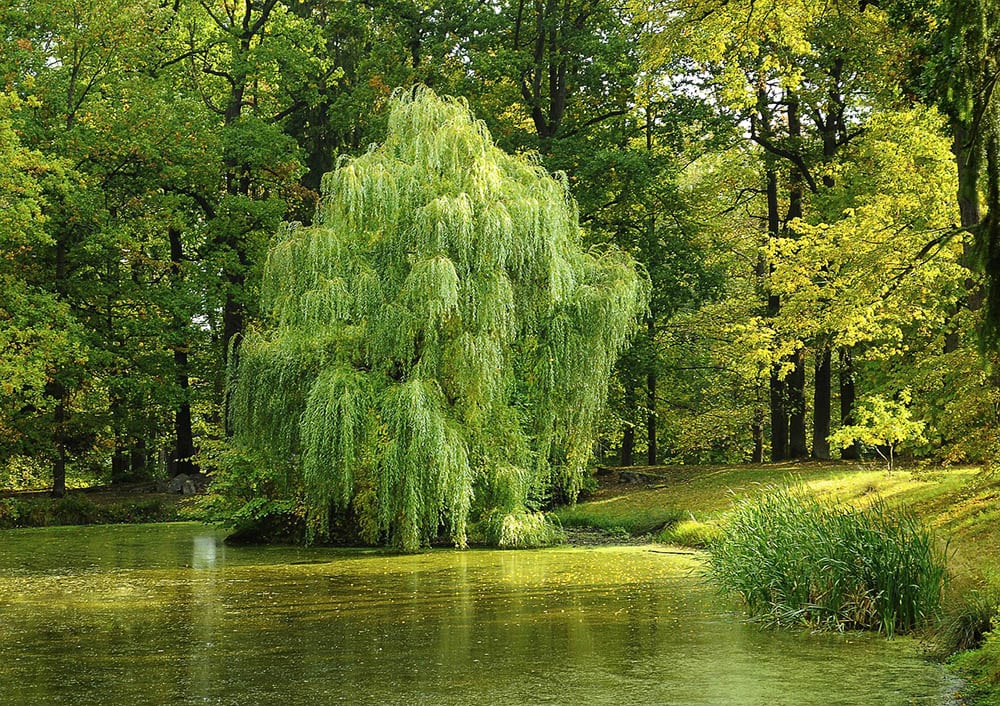
Whether you are fascinated by the many different types of trees or are looking for the perfect one to add to your yard, add the willow tree to your list! You might be surprised by how many varieties of willow trees there are, so keep reading while we look at each to learn more about them and see if they’re suitable for your yard or garden.

The 19 Different Types of Willow Trees
1. Bebb’s Willow
Genus: Salix bebbiana
The Bebb’s willow is native to North America and Canada and easily grows in the northern United States. It’s a fast-growing tree with alternating leaves that can grow five inches long. It likes damp soil, so you can usually find it along riverbeds, lakes, and streams. It produces fine, colorful wood that woodworkers like to use for carving.
2. Weeping Willow
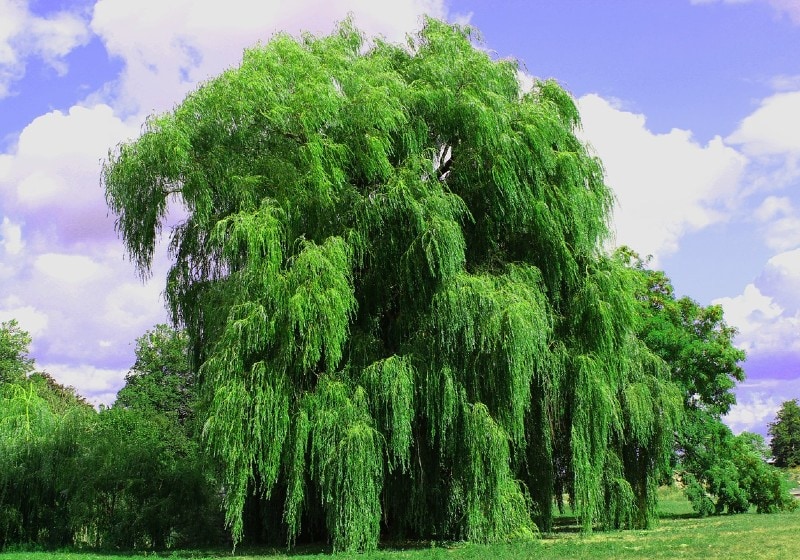
Genus: Salix babylonica
The weeping willow is one of the most popular trees in the world. It’s a medium to large tree that can grow up to 80 feet tall, but it has a short lifespan, and many trees only live between 40 and 75 years. It’s native to China but grows well in many parts of the world, including the United States. It has spiraled leaves that can grow more than six inches long and turn yellow in the fall.
3. White Willow

Genus: Salix alba
The white willow is a large and fast-growing variety of willow. It’s the largest species and can often grow more than 70 feet tall. Like other varieties, it prefers stamps soil, so it’s easy to find new riverbeds and lakes. They are native to Europe, Asia, and Africa, but you’ve been able to find them in the United States since the 1700s. It’s easy to grow, and many people describe it as romantic.
4. Corkscrew Willow
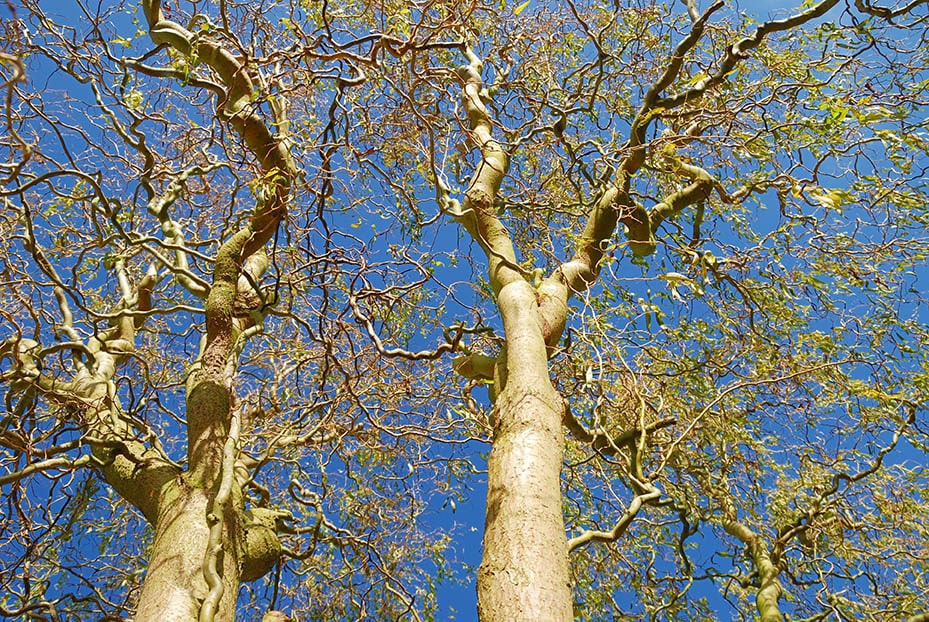
Genus: Salix matsudana
The corkscrew willow is a small to medium-sized tree that usually stands about 30 feet tall and about 15 feet wide. It has twisted, contorted branches that give it its name, and many people enjoy its formal appearance. You can prune it each year to promote new stem growth, which helps fill out the tree.
5. Goat Willow
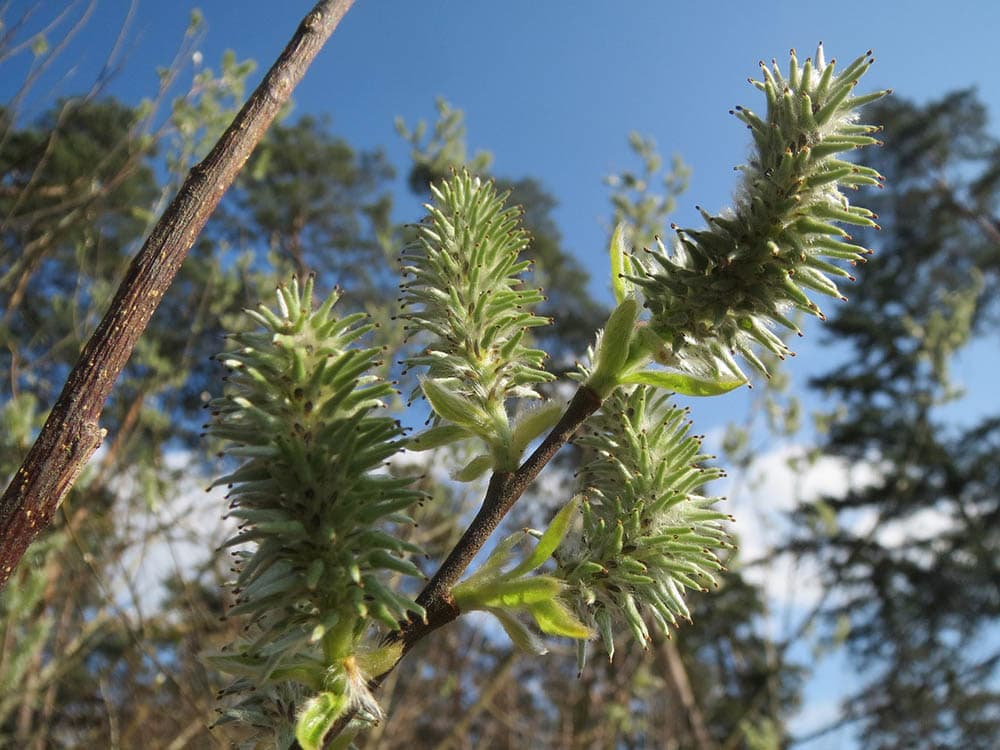
Genus: Salix caprea
The goat willow is another small-sized tree that usually only grows to about 25 – 30 feet. It’s broader than most other varieties and produces soft, silvery catkins in early spring, a type of flower cluster. These trees are native to Europe, and Asia and they enjoy damp soil near rivers, streams, and lakes.
6. Narrowleaf Willow (Coyote Willow)

Genus: Salix exigua
The narrowleaf willow has other names, including the coyote willow, and it’s a smaller tree that rarely grows more than 25 feet tall. As the name suggests, the six-inch leaves are usually no thicker than a third of an inch, and growers use them as ornamental trees. It’s native to the United States, but you can find it in many other parts of the world due to its popularity.
7. Dappled Willow
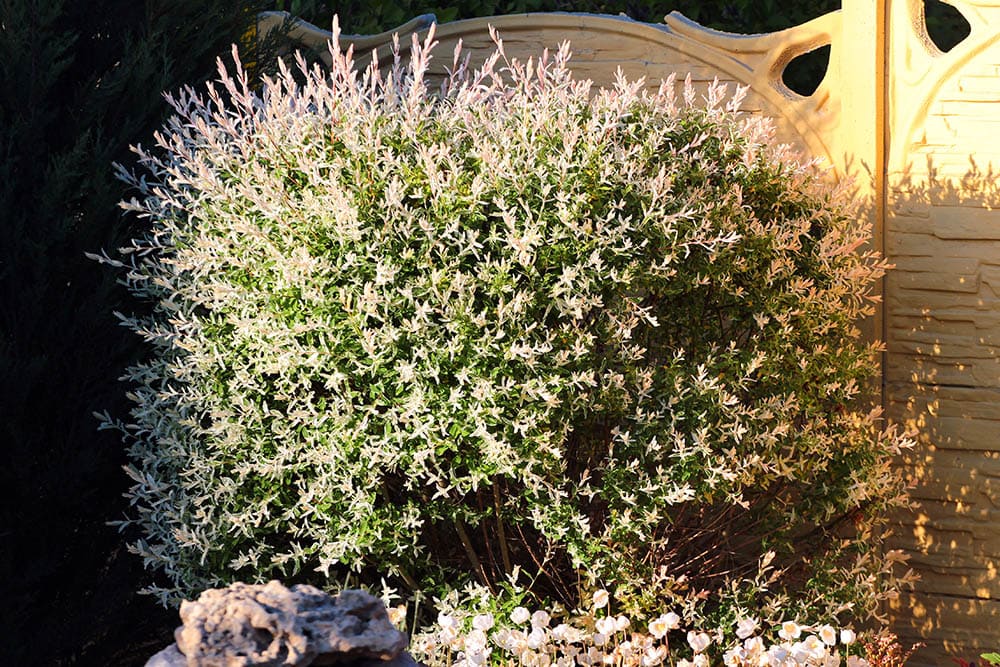
Genus: Salix integra
The dappled willow is a small tree that presents the viewer with modeled pink, white, and light green leaves, giving it an attractive appearance that many people seek out. It’s a fast-growing tree that requires little maintenance, but it’s prone to several parasites, which can make it difficult to grow successfully.
8. Peach-Leaf Willow
Genus: Salix amygdaloides
The peach-Leaf willow is a medium-sized willow tree native to the north-central United States and Canada, although you can find it as far as South as Arizona. It gets its name from its yellow and light green leaves with a whitish underside. You will usually find them in prairies near streams and rivers.
9. Purple Osier Willow

Genus: Salix purpurea
The purple osier willow is native to Europe, Asia, Poland, and the Baltic states. It’s a small shrubby type of willow that usually grows to only about 6 feet tall. It gets its name from the purple flowers it produces in early spring, and many people like to use the stems to weave baskets.
10. Crack Willow

Genus: Salix euxina (formerly S. fragilis)
The crack willow is a flowering willow that is native to Turkey. It has hairless olive-green branches that can be quite brittle (which is why it can also be called the brittle willow), and the leaves are pale green. Due to its popularity, you can find it in many other parts of the world besides Turkey, including the United States, Europe, and Canada.
11. Scouler’s Willow
Genus: Salix scouleriana
The Scouler’s willow is a species of willow native to the western United States and Canada. It has other names, including the black willow and the mountain willow. It’s a small tree that rarely grows more than 15-feet tall, and it seems to prefer higher elevations and cold, dry soil, which is quite different than many of the other willow varieties on this list.
12. Almond Willow
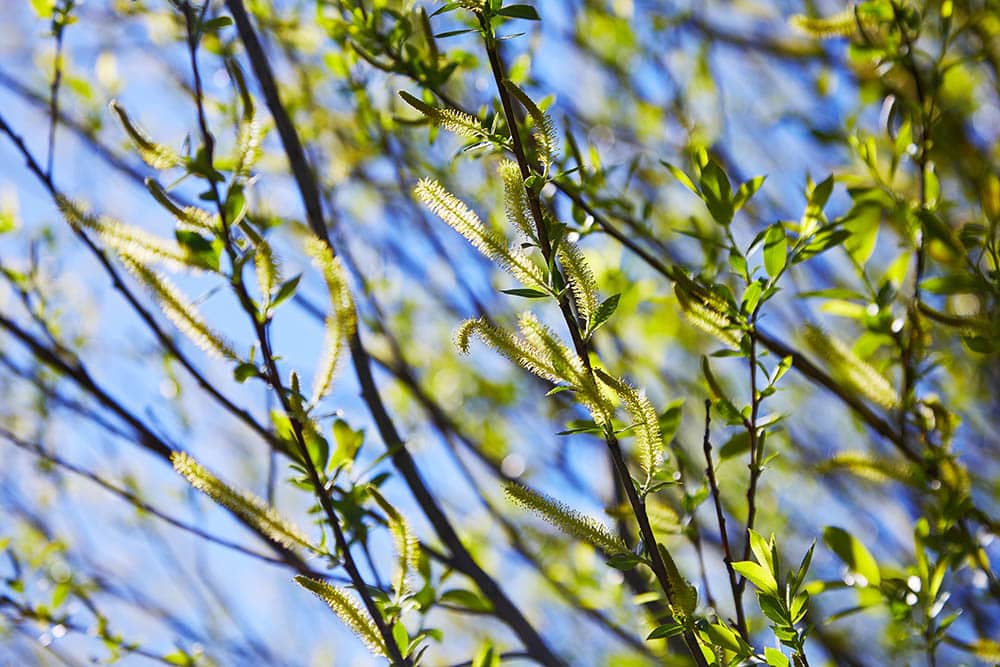
Genus: Salix triandra
The almond willow is native to Europe and Asia. It usually grows to about 30-feet tall and will have multiple stems with a leaning crown. It’s a potential biofuel, and it is popular in Russia as a nectar source for honeybees. Owners often use it for basket weaving due to the attractive branches.
13. Yellow Willow

Genus: Salix lutea
The yellow willow is native to North America and Central Canada. Like many of the other willows on this list, it prefers to grow in damp soil with plenty of sunlight. It’s a fast-growing tree with a moderately long lifespan, and it grows to about 16-feet tall. These trees attract both bees and butterflies, so they are a popular addition to the garden.
14. American Pussy Willow
Genus: Salix discolor
The American pussy willow is mainly cultivated because it has a key floral design in the Americas. It is most frequently used in gardens, hedges, and other landscaping designs. Often, American pussy willows only grow to be between 2-25 feet tall, but they can be 12 feet wide.
15. Arctic Willow
Genus: Salix arctica
The Arctic willow has the amazing ability to survive freezing and extreme temperatures. It is commonly found in Arctic conditions, such as rocky and snowy locations. The Arctic willow is one of the few woody plants found in some of the northern parts of the world.
16. Dwarf Willow
Genus: Salix herbacea
The dwarf willow is the perfect choice if you love willow trees but live in a compact space. It is often placed on balconies, patios, and other small areas. It can even tolerate a variety of climates and soils. At the most, a dwarf willow will only grow to be 5 feet tall.
17. Golden Willow
Genus: Salix alba
The golden willow is a very special willow type. It is a hybrid willow that came about from crossbreeding an Alba and weeping willow. The foliage cascades, and the color changes during the season. During winter, the branches are often golden and look like a burning bush.
18. Hooker’s Willow
Genus: Salix hookeriana
The Hooker’s willow is primarily found in coastal regions. It grows almost like a bush, but it can reach 26 feet. You might also find these willows in canyons and marshes. The Hooker’s willow belongs to the pussy willow family as well since it blooms white catkins.
19. Japanese Pink Pussy Willow
Genus: Salix gracilistyla
The Japanese pink pussy willow has a bold look. It is named after its hot pink plumes that grow during the spring. Often, Japanese pink pussy willow are only grown by experienced gardeners since they have extensive watering needs.

Summary
As you can see, there are quite a few different willow tree varieties, and most of them are fairly easy to grow, as long as you have plenty of moist soil and sunlight. Ponds and streams work best and will allow your tree to reach its full potential. Choose larger trees for fields or to create shade and choose something smaller for the garden.
We hope you enjoyed reading this short guide and found the answers you need. If we have helped you landscape your property, please share these different types of willow trees on Facebook and Twitter.
Looking for more types of trees? Check out:
Featured Image Credit: Pixabay
Contents